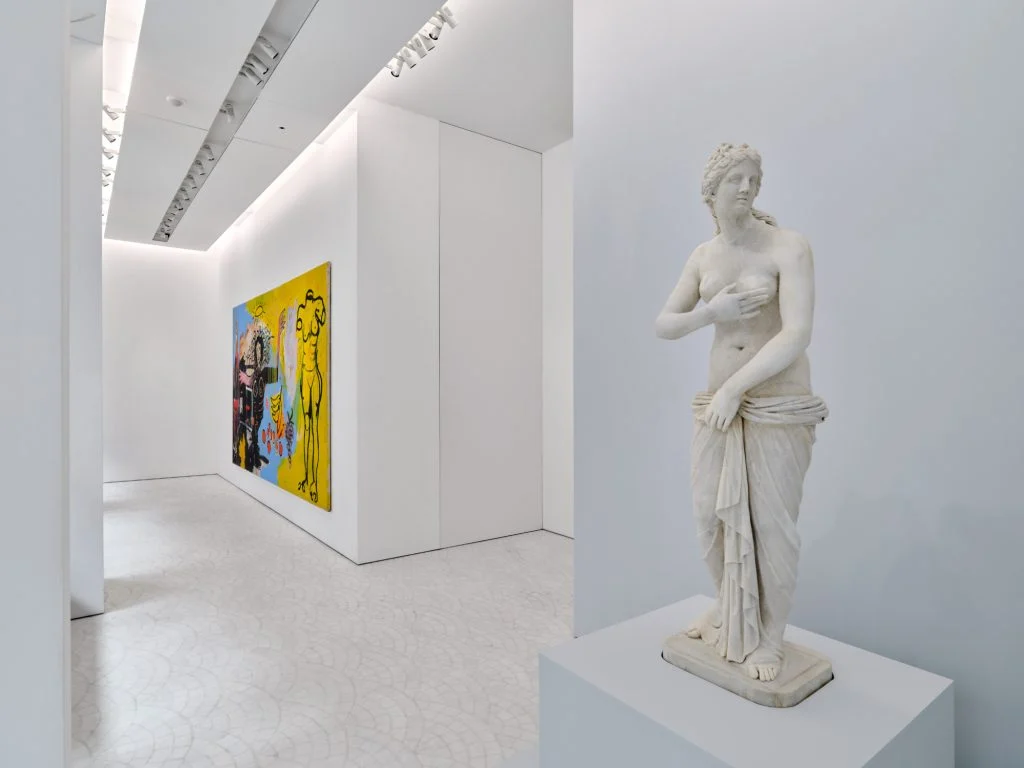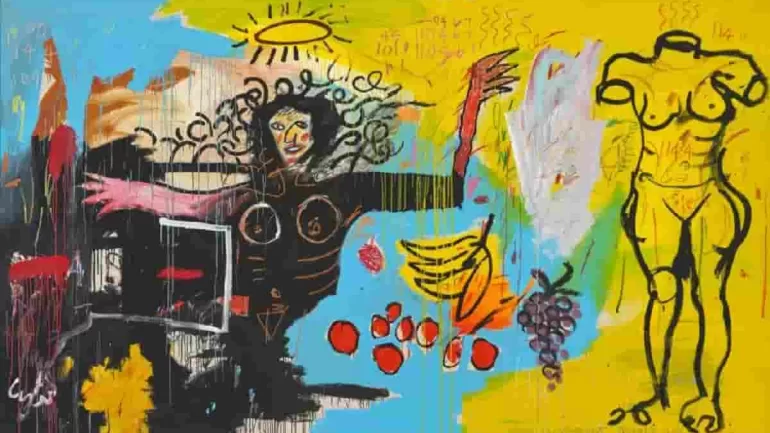ART & DESIGN
The iconic works of Jean-Michel Basquiat and Roman Venus come together, bridging modern creativity with ancient symbolism in an unforgettable artistic narrative.
BY ARTCENTRON NEWS
PARIS, FRANCE — In a captivating display of curatorial artistry, Gagosian Paris is hosting a remarkable exhibition that fuses the classical and the contemporary. This unique show features an ancient Roman sculpture of Venus alongside a striking painting by Jean-Michel Basquiat, offering visitors a fresh perspective on the late artist’s work.
This exhibition, titled Jean-Michel Basquiat: Venus, showcases a rare pairing that underscores the dialogues between art history and modern expression. Larry Gagosian, the gallery’s founder, states, “Basquiat reminds us of the common chords and resonances of beauty and identity throughout art history.” This sentiment resonates deeply throughout the exhibit.
A Meeting Between Jean-Michel Basquiat and Roman Venus
The centerpiece of the exhibition is Basquiat’s Untitled (1982). This is a vibrant piece, featuring the outline of a classical Venus statue. This painting is part of a series by the artist from when he was just 21 years old during a turbulent stay in Modena, Italy. Initially invited to produce an exhibition, his experience turned sour, yet this period profoundly shaped his artistic voice.
Basquiat’s works from this time were later sold by his New York gallerist Annina Nosei and only reunited with the Venus statue last year at a major exhibition in Basel, Switzerland. The juxtaposition of these two art pieces highlights how Basquiat’s exposure to classical art influenced his unique style.
Insights into Basquiat’s Journey
Recalling his time in Modena, Basquiat described it as “a sick factory,” because his desire was for fame rather than being confined to gallery life. However, his visit to Rome with his girlfriend, whom he affectionately called “Venus,” left a lasting impression. This relationship added emotional depth to his works, particularly Untitled. In the painting, a dynamic female figure echoes the grace of the Roman goddess.
Artistic Influences
The painting features bold imagery, including a female figure with outstretched arms, crowned with expressive curls, illuminated by a halo. Nearby, a bunch of grapes evokes Bacchanalian themes and references to Picasso’s iconic Les Demoiselles d’Avignon, a piece Basquiat admired. Critics have also drawn parallels to Botticelli’s The Birth of Venus and the works of Cy Twombly, showcasing Basquiat’s deep understanding of art history.
Jean-Michel Basquiat and Roman Venus: A Dialogue

The Roman Venus sculpture is on loan from the Torlonia Collection. The collection is renowned for being the world’s largest private holding of Roman antiquities. This collaboration not only brings attention to Basquiat’s influences but also supports the conservation of this exquisite marble figure.
Serena Cattaneo Adorno, Gagosian’s senior director in Paris, emphasizes the intention behind this pairing. “We want to bring the viewer closer to the influences that Basquiat was absorbing during his trip to Italy,” she said. Adorno describes the Modena series as unique for its “operatic emotion and overarching narrative.” It features motifs of angels, devils, and other compelling characters.
Fusion of Classical and Modern Artistry
The exhibition Jean-Michel Basquiat: Venus is a testament to the enduring impact of historical influences on contemporary art. Visitors can explore this extraordinary fusion of classical and modern artistry at Gagosian Paris until December 20. This compelling art exhibition not only celebrates Basquiat’s genius but also enriches our understanding of the artistic journey through history.
- Featured Image: Jean-Michel Basquiat, Untitled (Woman with Roman Torso [Venus]) (1982). Photo: Robert Bayer, © Estate of Jean-Michel Basquiat, licensed by Artestar, New York.
